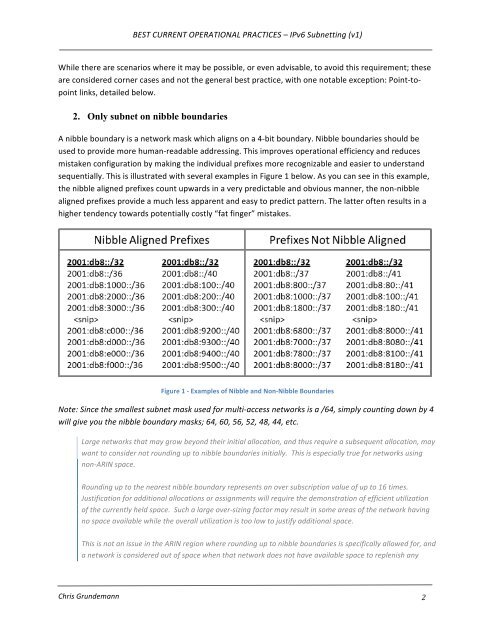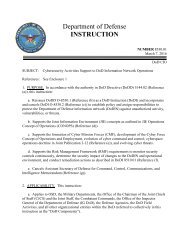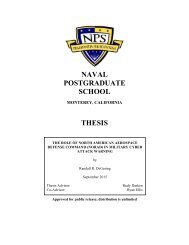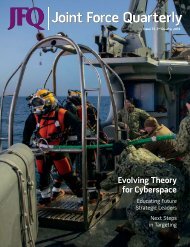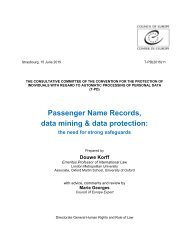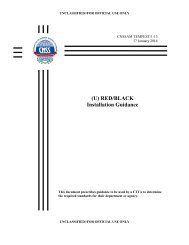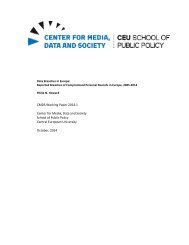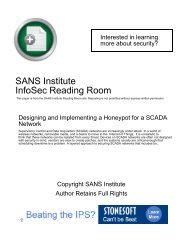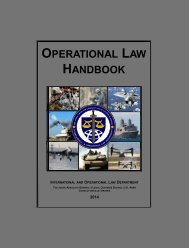BCOP-IPv6_Subnetting
BCOP-IPv6_Subnetting
BCOP-IPv6_Subnetting
Create successful ePaper yourself
Turn your PDF publications into a flip-book with our unique Google optimized e-Paper software.
BEST CURRENT OPERATIONAL PRACTICES – <strong>IPv6</strong> <strong>Subnetting</strong> (v1) <br />
While there are scenarios where it may be possible, or even advisable, to avoid this requirement; these <br />
are considered corner cases and not the general best practice, with one notable exception: Point-‐to-point<br />
links, detailed below. <br />
2. Only subnet on nibble boundaries<br />
A nibble boundary is a network mask which aligns on a 4-‐bit boundary. Nibble boundaries should be <br />
used to provide more human-‐readable addressing. This improves operational efficiency and reduces <br />
mistaken configuration by making the individual prefixes more recognizable and easier to understand <br />
sequentially. This is illustrated with several examples in Figure 1 below. As you can see in this example, <br />
the nibble aligned prefixes count upwards in a very predictable and obvious manner, the non-‐nibble <br />
aligned prefixes provide a much less apparent and easy to predict pattern. The latter often results in a <br />
higher tendency towards potentially costly “fat finger” mistakes. <br />
Figure 1 -‐ Examples of Nibble and Non-‐Nibble Boundaries <br />
Note: Since the smallest subnet mask used for multi-‐access networks is a /64, simply counting down by 4 <br />
will give you the nibble boundary masks; 64, 60, 56, 52, 48, 44, etc. <br />
Large networks that may grow beyond their initial allocation, and thus require a subsequent allocation, may <br />
want to consider not rounding up to nibble boundaries initially. This is especially true for networks using <br />
non-‐ARIN space. <br />
Rounding up to the nearest nibble boundary represents an over subscription value of up to 16 times. <br />
Justification for additional allocations or assignments will require the demonstration of efficient utilization <br />
of the currently held space. Such a large over-‐sizing factor may result in some areas of the network having <br />
no space available while the overall utilization is too low to justify additional space. <br />
This is not an issue in the ARIN region where rounding up to nibble boundaries is specifically allowed for, and <br />
a network is considered out of space when that network does not have available space to replenish any <br />
Chris Grundemann <br />
2


